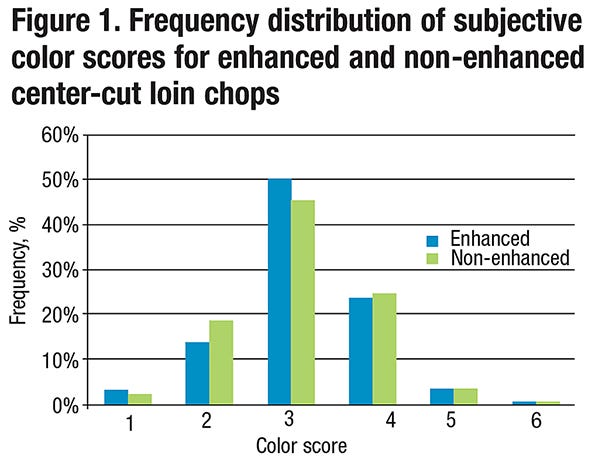January 5, 2016

A great deal of variation in pork quality exists in the retail marketplace, leaving consumers with a broad variety of pork quality characteristics, packaging types and price levels. The goal of this pork checkoff-funded research from North Dakota State University was to establish a baseline for fresh-pork quality at the retail level to assist the U.S. pork industry with providing a product with more consistent quality for a better eating experience.
The research began with the National Retail Benchmarking Audit in 2012, and the research team just completed the second round. Nationally, the research team collected in-store data from 117 retail supermarkets in 67 cities across the United States.
A full meat case assessment was completed at selected retailers. For the meat quality data, 10 packages of each brand of center-cut loin chops, blade steaks and sirloin chops in the store were evaluated for color, marbling and package information in the case as it appeared to the average customer.
From there, the researchers purchased enhanced and non-enhanced packaged product for objective measurements of pH, color and tenderness. Next, all the products were cooked the same way. Using the standardized Warner-Bratzler shear force procedure, researchers measured tenderness. All the data was compiled into a database to determine benchmark values for fresh-pork quality.
The data revealed that across the 65 brands of pork a large variation did occur, especially in the subjective color score. Looking at the color score for center-cut loin chops as evaluated in the meat case, a wide variation was recognized as illustrated in Figure 1. A large portion of the cuts fell below 3.0 with the average score at 3.14, regardless of enhancement treatment. This was based on meat standards, with 1.0 being the lightest (pale) color and 6.0 being the darkest (more red).
Looking at the shear force frequency, there was a wide spread in general across the products for tenderness and a big spread between enhanced and non-enhanced as seen in Figure 2. For reference, a score of 24.5 and over is characterized as more tough by consumers. 
In contrast, the marbling scores for the same center-cut loin chops were more consistent, with a large amount of the product falling into the 2% to 3% range for intramuscular fat as shown in Figure 3. 
The data collected in this research confirmed that a significant amount of U.S. pork fails to meet standards associated with good eating quality in terms of tenderness, juiciness and flavor. Establishing a uniform baseline for pork quality will help the industry to create more demand for pork by reducing pork quality variation.
Newman may be contacted at 701-231-7590 or [email protected]. This research project is funded by the National Pork Board.
You May Also Like



